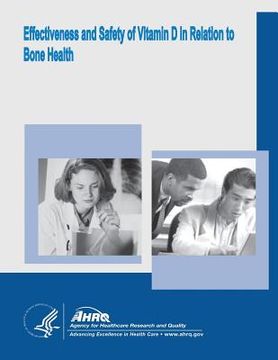Effectiveness and Safety of Vitamin D in Relation to Bone Health: Evidence Report/Technology Assessment Number 158 (en Inglés)
Reseña del libro "Effectiveness and Safety of Vitamin D in Relation to Bone Health: Evidence Report/Technology Assessment Number 158 (en Inglés)"
The University of Ottawa Evidence-based Practice Center (UO-EPC) reviewed and synthesized the published literature on five key questions. 1. Are specific circulating concentrations of 25 hydroxyvitamin D (25(OH)D) associated with bone health outcomes in: A. Children: rickets, bone mineral density (BMD), bone mineral content (BMC), fractures, or parathyroid hormone (PTH)? B. Women of reproductive age (including pregnant and lactating women): BMD, calcaneal ultrasound, fractures, PTH? C. Elderly men and postmenopausal women: BMD, fractures, falls? 2. Do food fortification, sun exposure, and/or vitamin D supplementation affect circulating concentrations of 25(OH)D? 3. What is the evidence regarding the effect of supplemental doses of vitamin D on bone mineral density and fracture or fall risk and does this vary with age groups, ethnicity, body mass index or geography? 4. Is there a level of sunlight exposure that is sufficient to maintain adequate vitamin D levels but does not increase the risk of non-melanoma or melanoma skin cancer? 5. Does intake of vitamin D above current reference intakes lead to toxicities (e.g., hypercalcemia, hypercalciuria, and calcification of soft tissue or major organs)? Osteoporosis-related fractures constitute an important socio-economic burden. The burden of fractures is expected to increase over the next two decades, with an expanding aging population. Effective treatment strategies that can be implemented on a population level are needed to decrease the burden of osteoporosis. Classical actions of vitamin D include the regulation of calcium homeostasis and the development and maintenance of the skeleton. Vitamin D's major biologic function is to maintain serum calcium and phosphorus concentrations within the normal range by enhancing intestinal absorption of calcium and release of calcium and phosphorus from bone. Low vitamin D status has been associated with the development of rickets and osteomalacia, and has been considered to lead to bone loss, fractures and falls. Vitamin D also has non-calciotropic autocrine and paracrine functions, for example, in the regulation of cell differentiation and proliferation. The enzyme 1-alpha hydroxylase is present in many tissues in addition to the kidney, resulting in extra-renal production of 1,25-dihydroxyvitamin D. There is also emerging evidence for immunomodulatory and anti-infective properties of vitamin D. The increased suggestions of nutritional vitamin D insufficiency in the general population and the potential impact of vitamin D status on bone health and chronic health conditions have highlighted the need to reassess current vitamin D reference intakes. Over the last few years, a number of large randomized trials have evaluated the effect of vitamin D supplementation on fractures, falls and harms. A systematic review was conducted to synthesize the most recent evidence and address the above questions.

